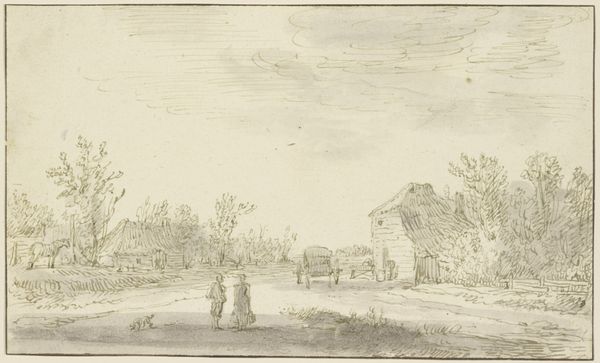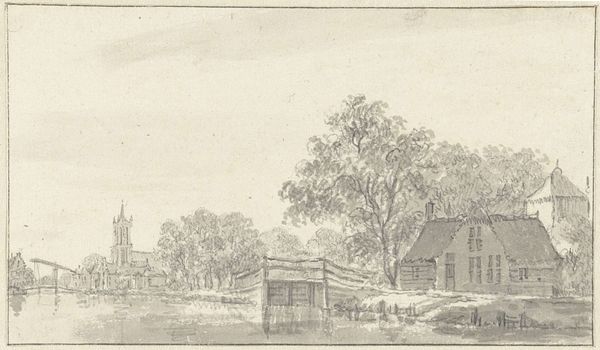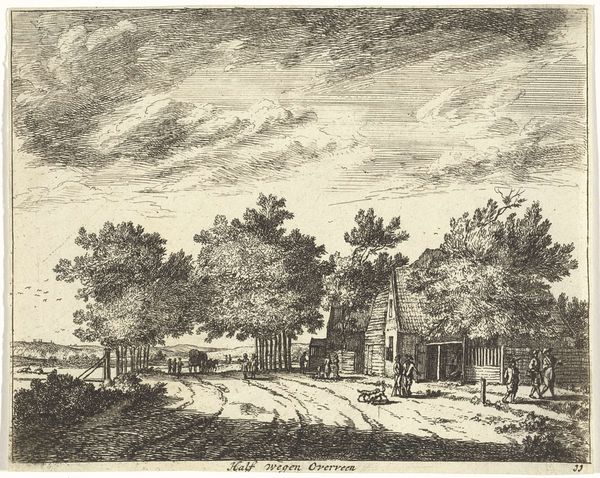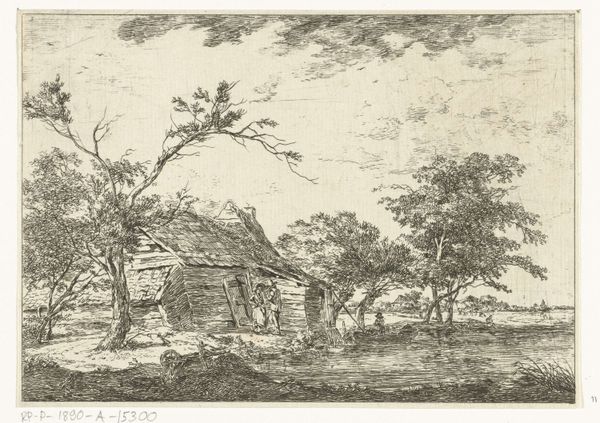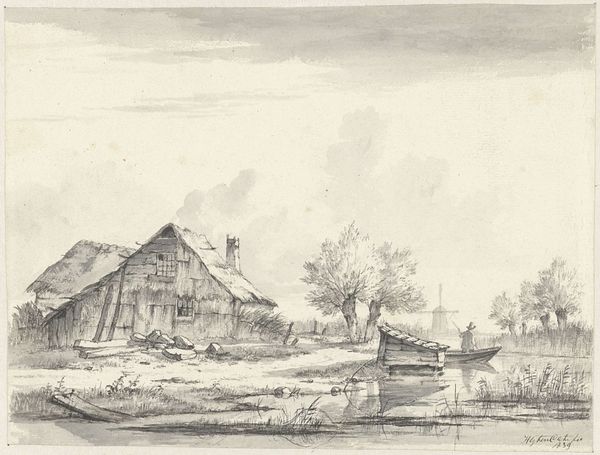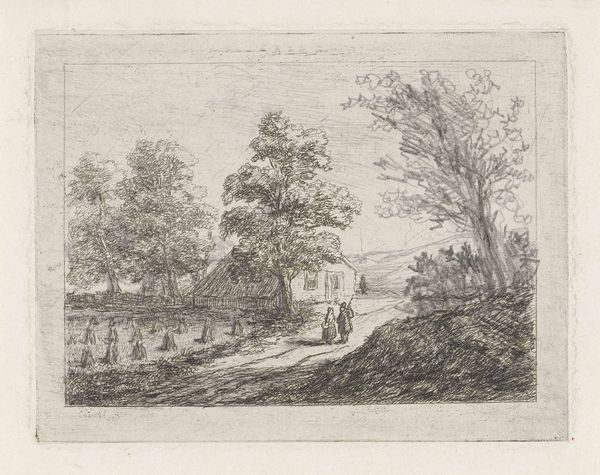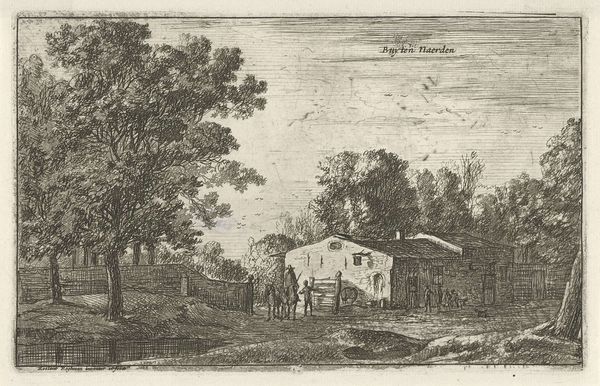
etching
#
etching
#
landscape
#
etching
#
figuration
#
romanticism
Dimensions: height 95 mm, width 123 mm
Copyright: Rijks Museum: Open Domain
Curator: Ah, look at this—"Landscape with Cornfield and Pasture with Sheep," an etching by Ernst Willem Jan Bagelaar, created around 1824. What springs to mind for you? Editor: An idyll! It’s serene and contemplative, but the scene feels a little haunted by a feeling of nostalgia. Is this just some romantic pastoral fantasy? Curator: It's more than just that. Bagelaar positions us within a historical context—specifically the Romanticism movement. The focus shifts away from city life to an almost idealized vision of rural living, but don't get confused, that does not imply he wanted us to go live as shepherds. It makes us ask how national identity in art connects to industrial development and change. Editor: True, it is pretty tame—we’re talking grazing sheep and not a scythe raised in anger. Speaking of sheep, those ones seem a little lost or separate from their group. Curator: Interesting, that speaks to the print’s quiet focus on individuals. Rather than large social movements, it suggests the interior lives of ordinary people connected to the land. This etching's strength lies in Bagelaar’s grasp of depth through such minute and delicate strokes. It lends this rustic landscape an extraordinary dimension, evoking intimacy while simultaneously celebrating the vast expanse of the natural world. Editor: There’s a strange stillness about the sky. The scene looks like it's being shown in an incomplete thought. Almost like memory fading with age. Curator: Indeed, Bagelaar captures nature with incredible sensitivity here. The sky contributes significantly to the mood; it lends the scene a reflective quality that invites viewers to escape to a simpler place. And, it highlights the social impact and tensions arising from the societal shifts toward more agrarian or industrial activities, the longing for the past serving as critique of the present. Editor: The use of etching lends the work a distinct, almost ethereal quality that might get lost in another medium. Curator: Absolutely. What you say suggests the transformative quality of printmaking, where a single image could be replicated and dispersed, taking these sentiments to new places and giving voice to growing feelings about changes during Bagelaar's period. Editor: Looking at it with all that in mind gives me new eyes. Thanks for unraveling those stories hidden in this scene, or else it would simply look to me like just another nice landscape. Curator: Of course. Delving deeper unveils stories we might not initially detect, making artworks surprisingly topical in their own way.
Comments
No comments
Be the first to comment and join the conversation on the ultimate creative platform.


